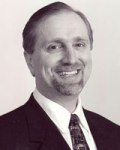About our Founder
Prof Groves served as the Technical Editor for Biblia Hebraica Quinta, a new text-critical edition of the Hebrew Bible. A multinational team of text-critical scholars is producing a new critical edition of the Hebrew Bible to replace the Biblia Hebraica Stuttgartensia. Prof Groves’ role was to develop data-entry and verification tools for the project and to re-examine the most recent photo-facsimiles of the Codex Leningradensis in order to verify the accuracy of the electronic text. The German Bible Society (the publisher) anticipates both hard copy and electronic publication sometime after 2010. The first fascicle (the Megilloth consisting of the books of Ruth, Esther, Song of Songs, Lamentations, and Ecclesiastes) was published in the fall of 2004. The Stuttgart Electronic Study Bible is a linguistic database of the Hebrew Bible prepared by Professor Eep Talstra of the Free University of Amsterdam. The pioneering task of encoding an electronic text of the Hebrew Bible with syntactical data was begun in 1977 by Professor Eep Talstra at the Free University, Amsterdam. Professor Groves participated in this project since 1988, helping with the production and verification of the data. The SESB program was publically released in 2004, marking the first completion of the first phase of the project. The University of Greifswald (Germany) is also a partner in this project, as well as the German Bible Society. Twenty-five years later... The Groves Center continues to maintain the WLC, now arguably the most accurate representation of the Leningrad Codex of the Hebrew Bible in existence. Groves Center Assistant Director, Stephen Salisbury, is not only responsible for the WLC, but is also editor of the WHM database. Dr. Kirk Lowery, Director of the Center, continues the original vision of Prof Groves, exploring the ever developing tools of computational linguistics and information technology to extend the work of the Center into new areas: a partnership with the Asia Bible Society to create a syntax database of the Hebrew Bible to be used in “next generation” translation software; the creation of new databases, e.g., a syntax database of the Greek New Testament; the adaptation of “data mining” techniques (like those used by Google and other Internet search engines) and data visualization tools to explore these databases in new ways. Professor Groves passed away after a year-long struggle with cancer in February, 2007. He was 54. |







 At the dawn of the Information Age J. Alan Groves, Dartmouth engineering graduate, realized that computers could not only crunch numbers, but also crunch text. He envisioned a database of the Hebrew Bible, in which every word was linguistically described. But this was the era of the mainframe, with punch cards and computer tape for storage. What was needed was an electronic representation or mirror image of the Hebrew Bible. Then the word-by-word analysis could be semi-automated using computer programs. In 1987, the first version of what would eventually be called “The Westminster Leningrad Codex (WLC)” was released. In 1991, version 1.0 of “The Westminster Hebrew Morphology (WHM)” completed Prof. Groves’ initial goals. This electronic text and database went on to be used all over the globe, one of the first to be used in the infant Bible software industry.
At the dawn of the Information Age J. Alan Groves, Dartmouth engineering graduate, realized that computers could not only crunch numbers, but also crunch text. He envisioned a database of the Hebrew Bible, in which every word was linguistically described. But this was the era of the mainframe, with punch cards and computer tape for storage. What was needed was an electronic representation or mirror image of the Hebrew Bible. Then the word-by-word analysis could be semi-automated using computer programs. In 1987, the first version of what would eventually be called “The Westminster Leningrad Codex (WLC)” was released. In 1991, version 1.0 of “The Westminster Hebrew Morphology (WHM)” completed Prof. Groves’ initial goals. This electronic text and database went on to be used all over the globe, one of the first to be used in the infant Bible software industry.